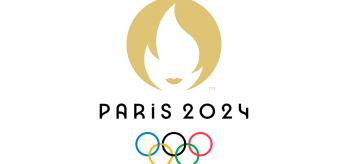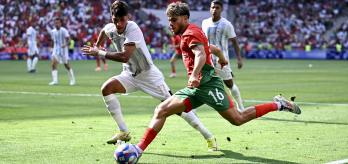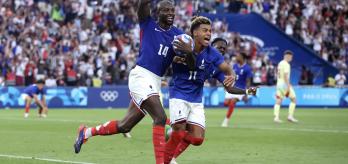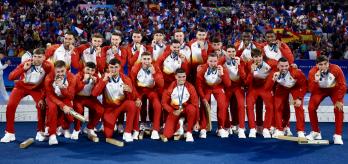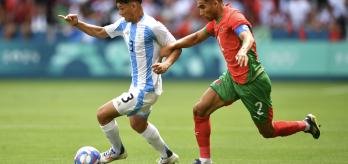The first of them concerns shot-stopping, and in this article, “Zubi” explains how goalkeepers are proving difficult to beat from close range. His observations are supported by data from FIFA’s Football Performance Insights Team, gathered at all seven Olympic venues.
Shot-stopping solidity
An exploration of the data collected up to and including the semi-finals indicates that goalkeepers have saved 64% of all attempts on target from within the penalty area. As Zuberbühler notes, there could be a number of reasons for the goalkeepers’ high success rate, and this article will explore some of them in detail:
“This is a high percentage, so it was interesting to explore the reasons for this,” the former Switzerland goalkeeper said. “Only two goalkeepers had a save percentage of less than 50% in these specific situations, with four having save rates of 75% or more. There are technical details in these moments that make a difference when goalkeepers are facing attempts at goal from inside their penalty area, and we have some clips here that show the crucial details that made it possible for some of these saves to be made.”
Gatito Fernández - Paraguay
Clip 1 below, taken from Paraguay’s quarter-final match against Egypt, shows Paraguay goalkeeper Gatito Fernández (1) making an x-block save from a close-range attempt at goal. As the ball is brought into the penalty area, he is set at his near post, defending his goal against any potential effort by Zizo (14). As soon as the ball is cut back to the edge of the penalty area, he sees that the point of attack is changing and quickly adjusts his position. Mahmoud Saber (7) then receives the ball and begins to advance unopposed towards the Paraguayan goal. Fernández recognises the danger, and decides to move towards Saber to close him down. It turns out to be the right decision, as Pascal Zuberbühler explains:
“By moving closer to the attacking player in possession, the goalkeeper makes himself bigger and the goal smaller, reducing the on-target space available. His upper body is square, his shoulders are square, his body position is great, and these explosive steps forward are the crucial factor in him making this x-block save off his chest.”
Hasan Hussein - Iraq
We see a similar example in clip 2, as Iraq goalkeeper Hasan Hussein (1) makes an x-block save from close range against Argentina. As soon as the ball is played in behind his defensive line, and he recognises that his defenders are not in a position to defend against the danger, he advances quickly, making himself as big as possible to make the save, while his recovering defenders protect the goal.
Munir El Kajoui - Morocco
Finally, in the third clip, Morocco goalkeeper Munir El Kajoui makes an important save in their group stage match against Argentina. Significantly, his starting position on the edge of his goal area (six-yard box) gives him a good view of the pitch, which means he has time to react to what is going on in front of him. As soon as his team fails to win the loose ball, he drops back a yard towards his goal, ready to face a shot. However, the effort on goal fails to materialise, and the ball is played into the space behind his defensive line instead. El Kajoui waits to see if his defender can deal with the situation, but the second he realises that his team-mate has not eliminated the danger, he takes a crucial step forward. This reduces the on-target space available behind him, allowing him to make a crucial intervention and, eventually, to gather the ball.
Positioning is key
In all these examples, good positioning is critical, as Zuberbühler is keen to stress:
“As soon as the goalkeeper recognises they are in the 1v1 situation and their defenders cannot help, the crucial steps forward towards the attacking player with the ball can make all the difference. In these situations, goalkeepers must show courage, be brave, and have a strong upper body shape, strong feet and strong hands. By getting closer to the attacker, they can make themselves big and reduce the angles available for goal-scoring opportunities. They must recognise when the attacking player does not have the ball fully under control, and that this is the opportunity to advance. Once the attacker has the ball under control and can shoot, the goalkeeper must be set and ready to make the intervention.”




